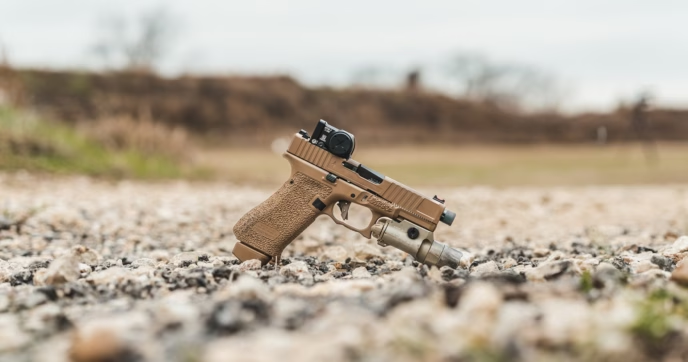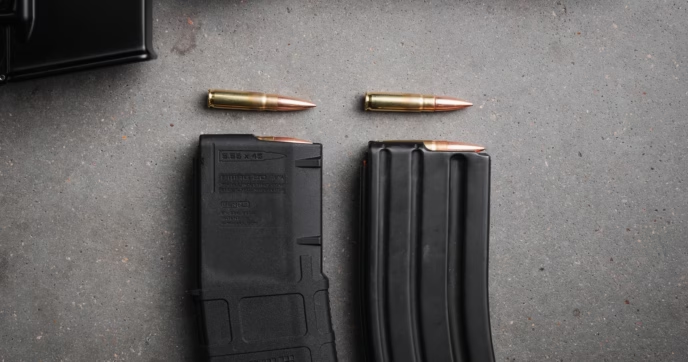Out of all the many AR-15 upgrades available, flash cans are probably one of the most misunderstood. Also known as blast diffusers or linear compensators, these devices are the subject of a great deal of urban myth. Sadly, sometimes the real facts get lost.
Flash cans are something of a niche item; they do one job, and they do it well, but it’s definitely not right for all applications. Below, we’ll go through what flash cans do, how they work, and when your firearm might benefit from them.

What is a Flash Can?
A flash can is a type of muzzle device. They’re most commonly used on AR-15s but are available for a wide variety of firearms in a myriad of calibers. As the name suggests, flash cans are simple can-shaped devices, typically with forward-facing ports or no ports at all.
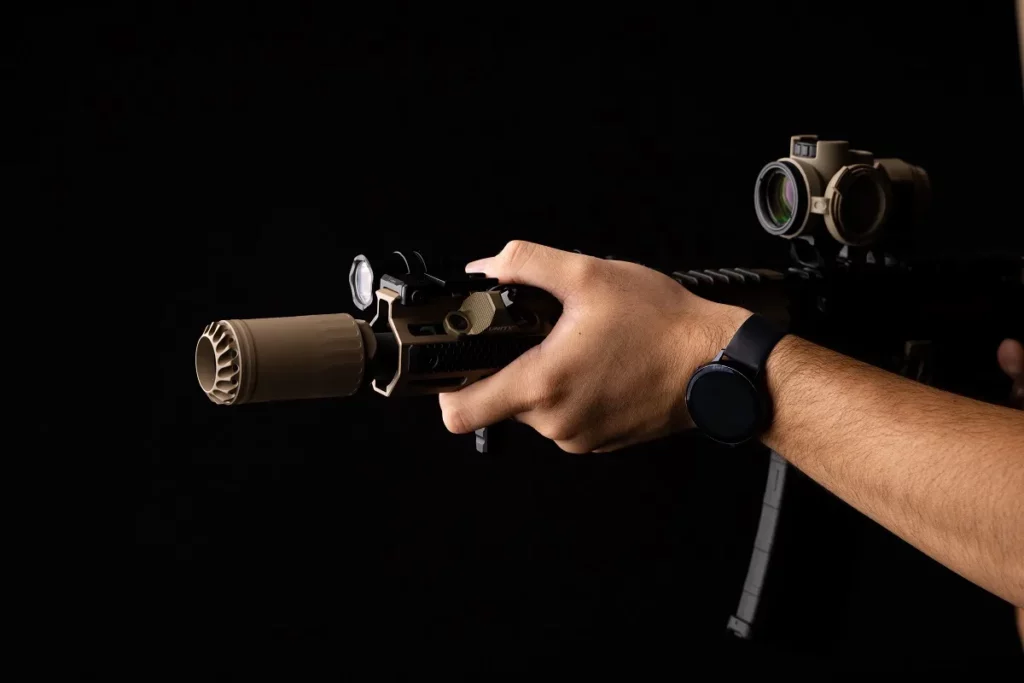
How it Differs From a Flash Hider or Muzzle Brake
The biggest difference between flash cans and other muzzle devices like flash hiders and muzzle brakes is the lack of ports along the body of the device. Flash hiders and muzzle brakes both use strategic porting to alter the way gas exits the barrel, either reducing flash or recoil or occasionally both.
Flash cans have no ports along the body. Certain flash cans feature ports at the front of the can, while others have no ports at all.
Benefits of Using an AR-15 Flash Can
The primary benefit of a flash can is that it directs all of the hot, expanding gas, along with much of the commensurate heat and light, forward. It essentially works as the inverse of a muzzle brake; instead of redirecting the gas backward to combat recoil, it contains the outward blast and channels it forward instead.
By directing the gas forward in a more contained fashion than a bare muzzle, a flash can is able to reduce the amount of gas and noise perceived by the shooter. If you’re at a range with other people, it will help to reduce the amount of blast they experience as well, so flash cans are sometimes thought of as a courtesy measure—particularly the quick-attach versions used to cover up a muzzle device.
Linear compensators, a sort of subset of flash cans, offer an additional benefit. While flash cans offer no recoil mitigation and can sometimes even slightly increase perceived recoil, linear compensators have a flat surface at the end of the device on which the escaping gas can push, slightly counteracting the rearward recoil of the firearm.
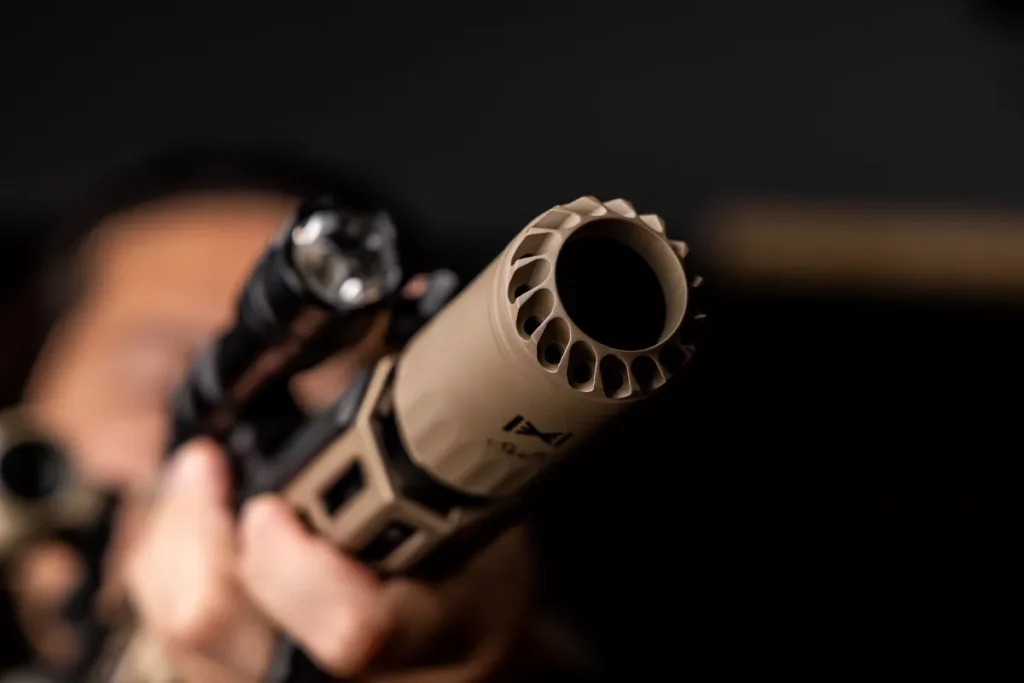
They work in a very similar way to muzzle brakes, but instead of porting the gas out the sides of the device, they eject it out the front. The recoil mitigation is less than a traditional brake but much less likely to draw ire at the range.
Flash Cans: The Drawbacks
Of course, no muzzle device is all upside; everything has tradeoffs. Flash cans, as the name would suggest, can often increase the amount of perceived muzzle flash created by the gunshot, especially when used with ammunition that does not contain flash-suppressant powder.
Additionally, while flash cans do reduce the amount of gas and noise perceived by the shooter and those along the firing line, they do not reduce the total amount of either. The blast of the gunshot is merely directed downrange.
Because of this, blast cans are of very limited use defensively. On indoor firing ranges, which are commonly 25 yards long or more, the blast from the shot has room to dissipate.
However, very few of us have bedrooms with that kind of space. In an average-sized room, the concussive effect from the gunshot is still going to be substantial, as the blast is contained and reverberated rather than dissipated. Additionally, the increased flash can be disorienting in such a small space, particularly for those who are only used to using their flash can equipped firearm on a range.
Should You Use an AR-15 Flash Can?
Despite the drawbacks, flash cans are excellent muzzle devices for several purposes.
For new shooters, the reduction in the perceived blast can be a substantial boon, allowing them to focus on learning the fundamentals of marksmanship without being buffeted by the report every time they pull the trigger. The same is true for any shooters particularly sensitive to muzzle blast, regardless of the reason.
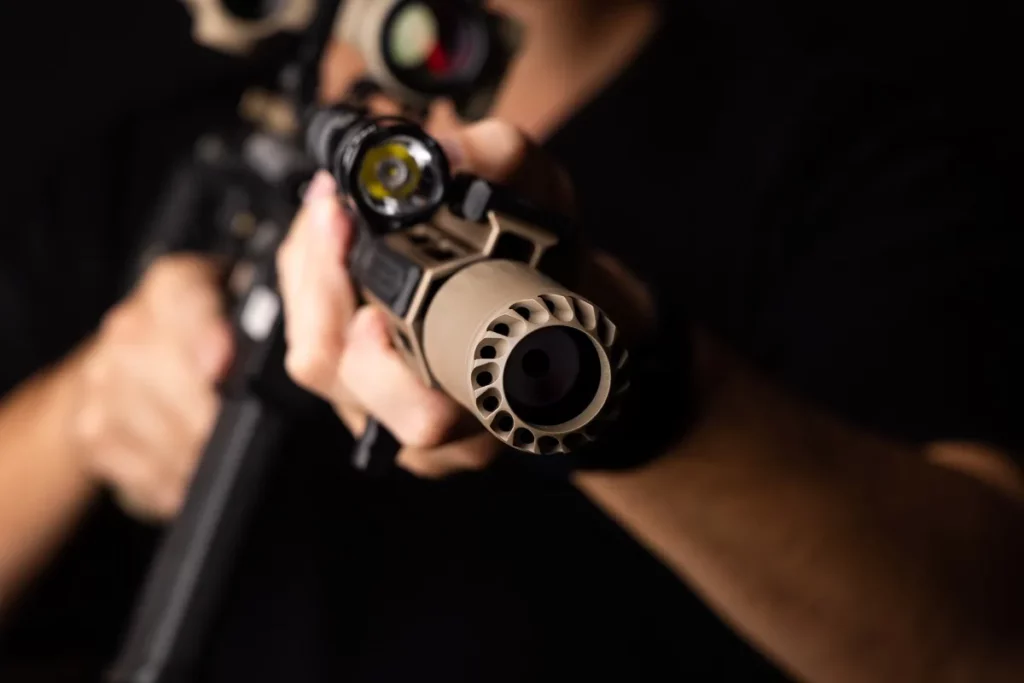
Blast cans, especially those that offer QD functionality and work in concert with a primary muzzle device, can also be an excellent way to show courtesy to others at a range. While there’s certainly nothing wrong with shooting a flash hider or muzzle brake-equipped rifle at a range—it is a gun range, after all, so some amount of ambient noise and blast is to be expected – a flash can goes a long way to building positive relationships with the other patrons.
Take SureFire’s Warden device, for example. Its QD function allows it to be used with any SureFire muzzle device that doubles as a suppressor mount, including several of their muzzle brakes and the Warcomp. Attachment takes only a few seconds, making it easy to pop the Warden on when shooting indoors at a range with others, then remove it for private practice or outdoor training where other shooters have more space.
Wrap Up
Flash cans may be a niche AR-15 accessory, but what they do, they do exceptionally well. If you’re looking to reduce the amount of blast you feel or just trying to avoid clearing out the range every time you uncase your rifle, a blast can is an excellent option.
For more information about AR-15 Upgrades, Parts, and How To questions check out the rest of our firearms articles from our expert staff.


